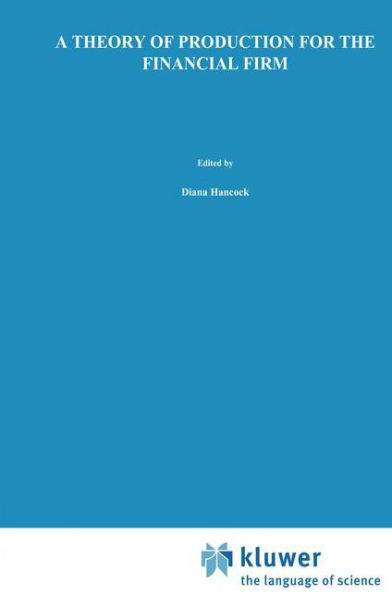5
1
9780792391401


A Theory of Production for the Financial Firm / Edition 1 available in Hardcover

A Theory of Production for the Financial Firm / Edition 1
- ISBN-10:
- 0792391403
- ISBN-13:
- 9780792391401
- Pub. Date:
- 03/31/1991
- Publisher:
- Springer Netherlands
- ISBN-10:
- 0792391403
- ISBN-13:
- 9780792391401
- Pub. Date:
- 03/31/1991
- Publisher:
- Springer Netherlands
109.99
In Stock

Product Details
| ISBN-13: | 9780792391401 |
|---|---|
| Publisher: | Springer Netherlands |
| Publication date: | 03/31/1991 |
| Series: | Innovations in Financial Markets and Institutions , #4 |
| Edition description: | 1991 |
| Pages: | 157 |
| Product dimensions: | 6.10(w) x 9.25(h) x 0.24(d) |
From the B&N Reads Blog
